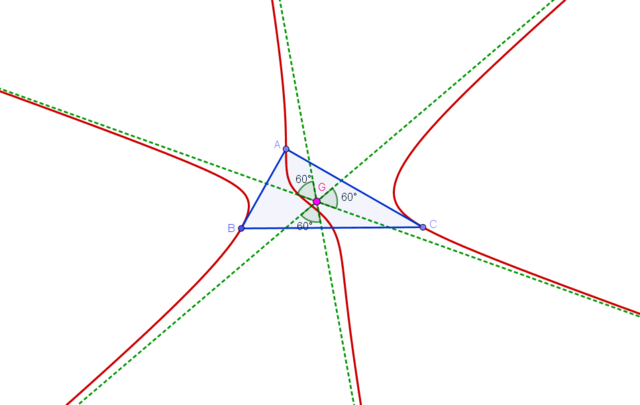Top Qs
Timeline
Chat
Perspective
McCay cubic
Plane curve unique to a given triangle From Wikipedia, the free encyclopedia
Remove ads
In Euclidean geometry, the McCay cubic (also called M'Cay cubic[1] or Griffiths cubic[2]) is a cubic plane curve in the plane of a reference triangle and associated with it. It is the third cubic curve in Bernard Gilbert's Catalogue of Triangle Cubics and it is assigned the identification number K003.[2]
Definition

Reference triangle △ABC
The McCay cubic can be defined by locus properties in several ways.[2] For example, the McCay cubic is the locus of a point P such that the pedal circle of P is tangent to the nine-point circle of the reference triangle △ABC.[3] The McCay cubic can also be defined as the locus of point P such that the circumcevian triangle of P and △ABC are orthologic.
Remove ads
Equation of the McCay cubic
The equation of the McCay cubic in barycentric coordinates is
The equation in trilinear coordinates is
Remove ads
McCay cubic as a stelloid

A stelloid is a cubic that has three real concurring asymptotes making 60° angles with one another. McCay cubic is a stelloid in which the three asymptotes concur at the centroid of triangle ABC.[2] A circum-stelloid having the same asymptotic directions as those of McCay cubic and concurring at a certain (finite) is called McCay stelloid. The point where the asymptoptes concur is called the "radial center" of the stelloid.[4] Given a finite point X there is one and only one McCay stelloid with X as the radial center.
References
Wikiwand - on
Seamless Wikipedia browsing. On steroids.
Remove ads



